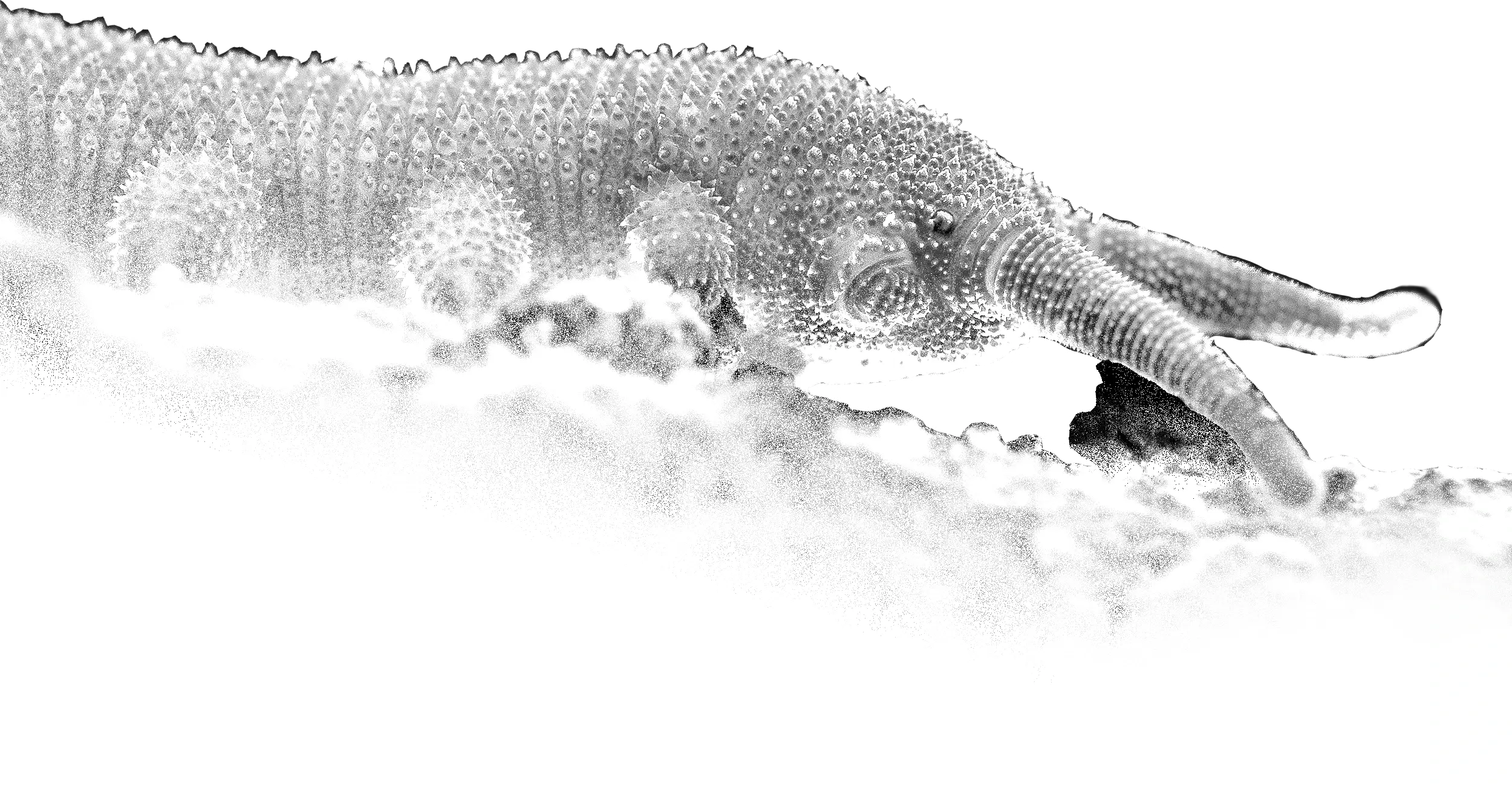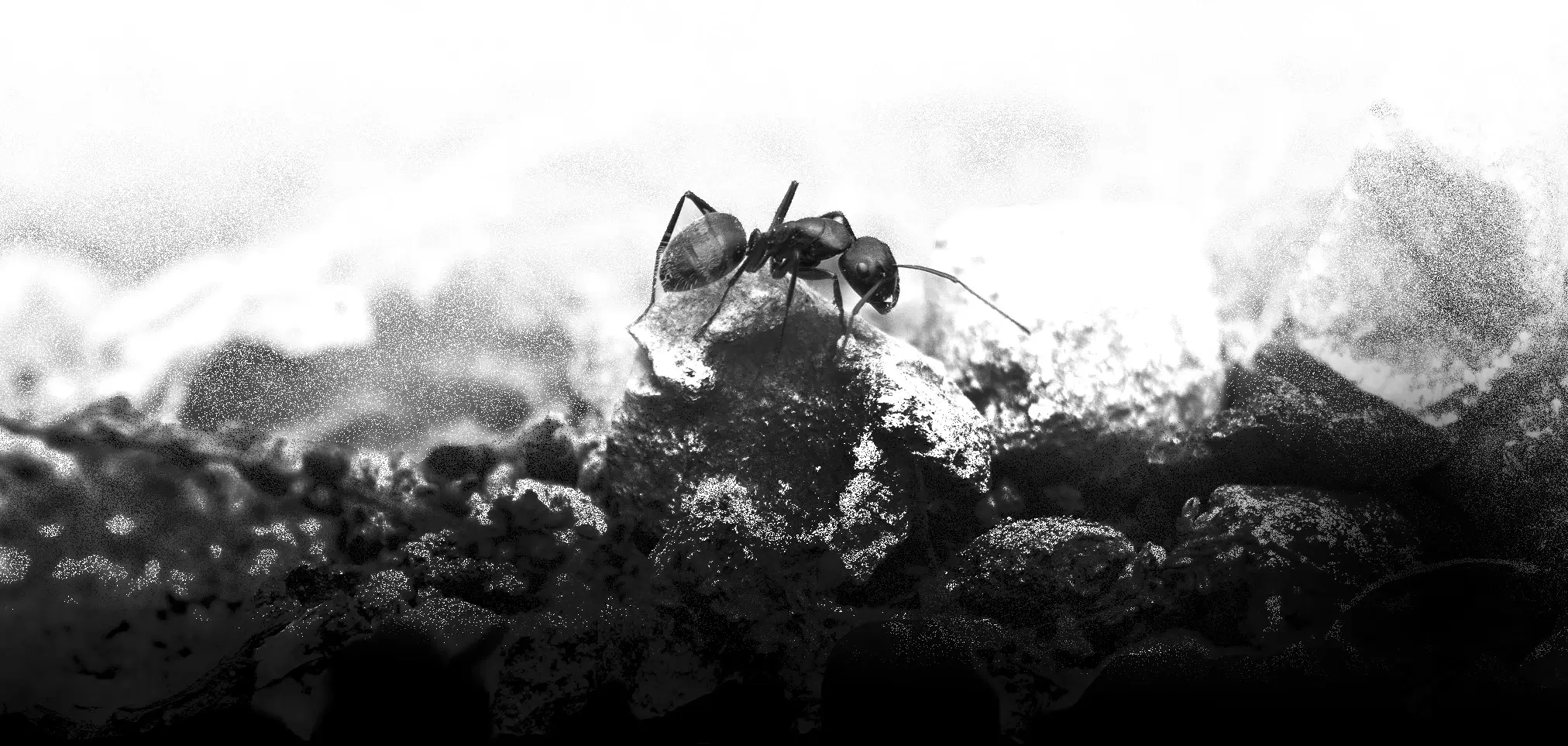
(Onychophora)
Velvet Worms
Первиннотрахейні
Onychophora, commonly known as velvet worms (for their velvety texture and somewhat wormlike appearance) or more ambiguously as peripatus, is a phylum of elongate, soft-bodied, many-legged animals. In appearance they have variously been compared to worms with legs, caterpillars, and slugs. They prey upon other invertebrates, which they catch by ejecting an adhesive slime. Approximately 200 species of velvet worms have been described, although the true number of species is likely to be much greater than that.
The two extant families of velvet worms are Peripatidae and Peripatopsidae. They show a peculiar distribution, with the peripatids being predominantly equatorial and tropical, while the peripatopsids are all found south of the equator. It is the only phylum within Animalia that is wholly endemic to terrestrial environments, at least among extant members. Velvet worms are generally considered close relatives of the Arthropoda and Tardigrada, with which they form the proposed taxon Panarthropoda.
Anatomy and physiology
Velvet worms are segmented animals with a flattened cylindrical body cross-section and rows of unstructured body appendages known as oncopods or lobopods (informally: stub feet). They reach lengths between 0.1 and 22 cm (0.04–8.66 in) depending on species, with the smallest known being Ooperipatellus nanus and the largest known is Mongeperipatus solorzanoi. The number of leg pairs ranges from as few as 13 (in Ooperipatellus nanus) to as many as 43 (in Plicatoperipatus jamaicensis). Their skin consists of numerous, fine transverse rings and is often inconspicuously coloured orange, red or brown, but sometimes also bright green, blue, gold or white, and occasionally patterned with other colours.
Distribution
Velvet worms are found in the tropics and in the temperate zone of the Southern Hemisphere. Members of the family Peripatidae are found the tropical regions of South America, Central America, the Caribbean islands, Gabon, Northeast India, and Southeast Asia. Meanwhile, members of Peripatopsidae are found Chile, Australia, Southern Africa, New Guinea, and New Zealand. When looking at velvet worms as a whole, the majority of are found in Australia and South America
Habitat
All extant velvet worms are terrestrial (land-living) and prefer dark environments with high air humidity. They are found particularly in the rainforests of the tropics and temperate zones, where they live among moss cushions and leaf litter, under tree trunks and stones, in rotting wood or in termite tunnels. They also occur in unforested grassland, if there exist sufficient crevices in the soil into which they can withdraw during the day, and in caves. Two species live in caves, a habitat to which their ability to squeeze themselves into the smallest cracks makes them exceptionally well-adapted and in which constant living conditions are guaranteed. Since the essential requirements for cave life were probably already present prior to the settlement of these habitats, this may be described as exaptation.
Velvet worms are photophobic: They are repelled by bright light sources. Because the danger of desiccation is greatest during the day and in dry weather, it is not surprising that velvet worms are usually most active at night and during rainy weather. Under cold or dry conditions, they actively seek out crevices in which they shift their body into a resting state.
Behaviour
Velvet worms move in a slow and gradual motion that makes them difficult for prey to notice. Their trunk is raised relatively high above the ground, and they walk with non-overlapping steps. To move from place to place, the velvet worm crawls forward using its legs; unlike in arthropods, both legs of a pair are moved simultaneously. The claws of the feet are used only on hard, rough terrain where a firm grip is needed; on soft substrates, such as moss, the velvet worm walks on the foot cushions at the base of the claws.
Velvet worms are ambush predators, hunting only by night, and are able to capture animals at least their own size, although capturing a large prey item may take almost all of their mucus-secreting capacity. They feed on almost any small invertebrates, including woodlice (Isopoda), termites (Isoptera), crickets (Gryllidae), book/bark lice (Psocoptera), cockroaches (Blattidae), millipedes and centipedes (Myriapoda), spiders (Araneae), various worms, and even large snails (Gastropoda). Depending on their size, they eat on average every one to four weeks. They are considered to be ecologically equivalent to centipedes (Chilopoda).
Almost all velvet worms reproduce sexually. The sole exception is Epiperipatus imthurni, which have no males and reproduce by parthenogenesis. In most cases, velvet worms are sexually dimorphic. Females are usually larger than males and can often have more legs. All velvet worms have internal fertilization, though the way this is done varies widely. For most of them, a package of sperm cells called the spermatophore is placed into female’s vagina. In many species, fertilization happens only once. Because of this, copulation can happen before reproductive organs are even fully developed. In cases like this, sperm cells are kept in a special reservoir where they can survive for longer.
A female can have between 1 and 23 offspring per year; development from fertilized ovum to adult takes between 6 and 17 months and does not have a larval stage. This is probably also the original mode of development. Velvet worms have been known to live for up to six years.
Source: Wikipedia

